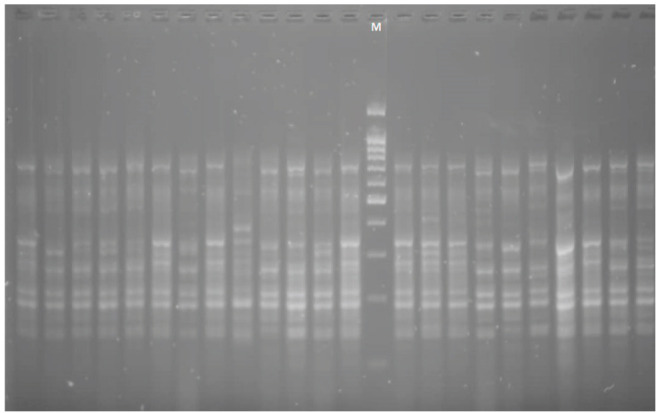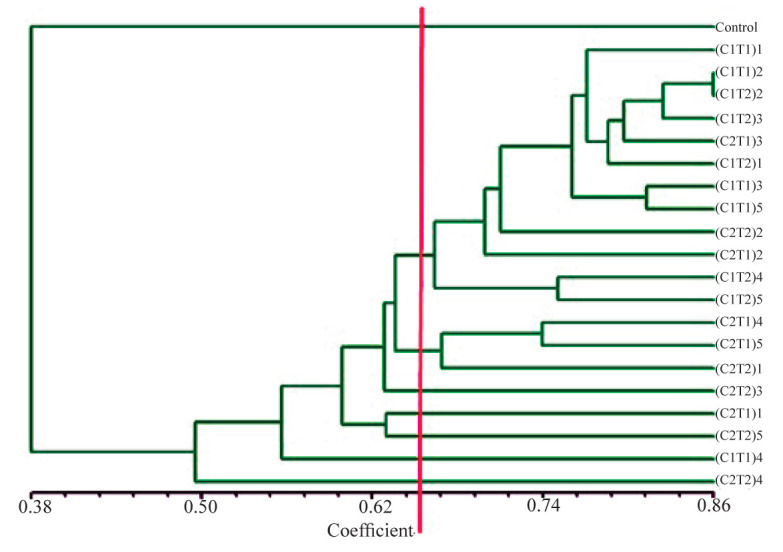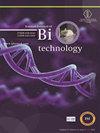Molecular and Biochemical Evaluation of Ethyl Methanesulfonate-Induced Mutant Lines in Camelina sativa L.
IF 1.6
4区 生物学
Q4 BIOTECHNOLOGY & APPLIED MICROBIOLOGY
引用次数: 0
Abstract
Background: Camelina sativa is one of the most important oilseeds that has a proportionate profile of essential unsaturated fatty acids that are suitable for human nutrition. In this regard, we can mention a high percentage and a reasonable ratio of omega 3 and omega 6. Objectives: In the current study, the created variation of second-generation mutant (M2) camelina lines in terms of fatty acid profiles and ISSR molecular markers in C. sativa was evaluated. Materials and Methods: For this purpose, while producing the first-generation of mutant plants (M1), 200 M2 seeds with 0.1% and 0.5% ethyl methanesulfonate (EMS) mutations were treated in two replications for 8 and 16 hours based on a completely randomized design. Results: The results of mean comparisons showed that there was no significant difference between treatments in terms of fatty acids of palmitic acid, stearic acid, linoleic acid, eicosadienoic acid, oleic acid and erucic acid. The cluster analysis revealed that all the treatments used with five replications were divided into eight groups. It was found that all replications of the treatment with a concentration of 0.1% and a time of 16 hours (C1T2) were in the second group with the lowest palmitic acid was present among other treatments. Therefore, C1T2 treatment is recommended as the best treatment to reduce palmitic acid. Examination of the information content of ISSR molecular markers also showed that markers 2, 5, and 6 were the best informative markers in the detection of camelina fatty acid profiles. Conclusion: A significant variation has been created in the fatty acids profile and it can be applied in future breeding programs depending on the intended purpose.


甲基磺酸乙酯诱导亚麻荠突变系的分子和生化评价。
背景:亚麻荠是最重要的油籽之一,具有适当比例的人体必需不饱和脂肪酸,适合人体营养。在这方面,我们可以提到欧米茄3和欧米茄6的高百分比和合理比例。目的:对二代突变体(M2)亚麻荠系在脂肪酸谱和ISSR分子标记方面的变异进行评价。材料和方法:在产生第一代突变植株(M1)的同时,采用完全随机设计,将200个含有0.1%和0.5%甲基磺酸乙酯(EMS)突变的M2种子分两个重复处理,分别处理8和16 h。结果:均数比较结果显示,棕榈酸、硬脂酸、亚油酸、二十碳二烯酸、油酸和芥酸的脂肪酸含量在处理间无显著差异。聚类分析显示,5个重复的所有治疗方法被分为8组。结果发现,浓度为0.1%,时间为16小时(C1T2)的处理的所有重复都出现在第二组,在其他处理中棕榈酸最低。因此,推荐使用C1T2处理作为降低棕榈酸的最佳处理。ISSR分子标记的信息含量检测也表明,标记2、5和6是检测亚麻荠脂肪酸谱的最佳信息标记。结论:脂肪酸谱已经产生了显著的变化,可以根据预期目的在未来的育种计划中应用。
本文章由计算机程序翻译,如有差异,请以英文原文为准。
求助全文
约1分钟内获得全文
求助全文
来源期刊

Iranian Journal of Biotechnology
BIOTECHNOLOGY & APPLIED MICROBIOLOGY-
CiteScore
2.60
自引率
7.70%
发文量
20
期刊介绍:
Iranian Journal of Biotechnology (IJB) is published quarterly by the National Institute of Genetic Engineering and Biotechnology. IJB publishes original scientific research papers in the broad area of Biotechnology such as, Agriculture, Animal and Marine Sciences, Basic Sciences, Bioinformatics, Biosafety and Bioethics, Environment, Industry and Mining and Medical Sciences.
 求助内容:
求助内容: 应助结果提醒方式:
应助结果提醒方式:


